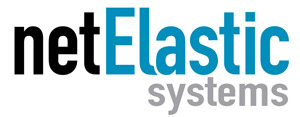High-speed internet access has become a necessity for much of our day-to-day lives. We shop, learn, receive health care, and communicate online. As a result, connecting individuals to affordable and high-speed internet has become an imperative for communities and governments alike.
To make “Internet for All” a reality, there are multiple broadband access technologies. However, service providers have traditionally used only one access technology. You either deployed copper, fiber, or wireless.
Multi-Access Broadband
Today, Wireless Internet Service Providers (WISPs) are increasingly rolling out fiber, and fiber ISPs are increasingly rolling out Fixed Wireless Access (FWA). And there’s many reasons behind this trend, including:
- No access technology can successfully meet all subscriber use cases.
- Many WISPs are deploying fiber to take advantage of government funding for fiber, and other drivers such as population density and geographic terrain.
- For fiber service providers, some locations may be too remote or impractical to deploy fiber (given the time and costs involved). Fixed wireless may be a quicker and more cost-effective way to reach those subscribers.
- Consolidation is growing among all broadband service providers, with many fiber providers merging with WISPs, and the combined company offering both access technologies.
- Broadband providers may also use fiber and wireless together for redundancy.
Funding is Key

A major reason why many WISPs are now embracing fiber is simple: an avalanche of government funding. In the United States, the RDOF (Rural Digital Opportunity Fund) is a $20 billion dollar program intended to facilitate the buildout of rural broadband. In addition, the Broadband Equity, Access, and Deployment (BEAD) Program, provides $42 billion to expand high-speed internet access by funding planning, infrastructure deployment, and adoption programs.
Fiber is the technology of choice for most government funding initiatives. And many WISPs are starting to deploy fiber to receive this funding. Embracing fiber may also become a competitive imperative, since wireline service providers receiving government funding may be laying fiber in areas that are currently served by WISPs. To help maintain their current customer base, and expand into new markets, many WISPs are starting to become fiber-first internet service providers (FFISPs).
The Broadband Network Gateway
For service providers looking at multi-access networks, broadband network gateways (BNGs) are an important piece of the network edge. BNGs aggregate traffic from subscribers and route it to the network of the service provider. Once connected, a subscriber can access the broadband services delivered by their provider.
What type of BNG is most appropriate for a multi-access broadband network? A proprietary, tightly-integrated hardware-based BNG, or a software-based BNG?
A BNG for Multi-Access Networks
netElastic’s software-based (or virtual) BNG enables broadband providers to economically and efficiently converge fiber and fixed-wireless access. netElastic’s multi-access vBNG separates the software from dedicated hardware, enabling broadband providers to quickly turn up additional network capacity without having to manually upgrade existing routers or purchase new routers to overcome capacity constraints. The result is a stable, reliable, and affordable broadband experience for subscribers.
They say “the trend is your friend,” and broadband service providers worldwide are now deploying virtual BNGs. netElastic developed one of the first software-based BNGs and is a market leader in vBNG technology. netElastic vBNGs run on standard Intel® Xeon® Scalable processor-based CPU technology, which provides the scalability to handle increased network traffic and the flexibility to quickly make new feature changes.
By eliminating proprietary hardware, netElastic vBNG is also helping broadband providers save money. netElastic vBNG customers report saving up to 70% compared to their previous vendors.
If you’d like to learn more about netElastic’s multi-access vBNG, please contact us today.

